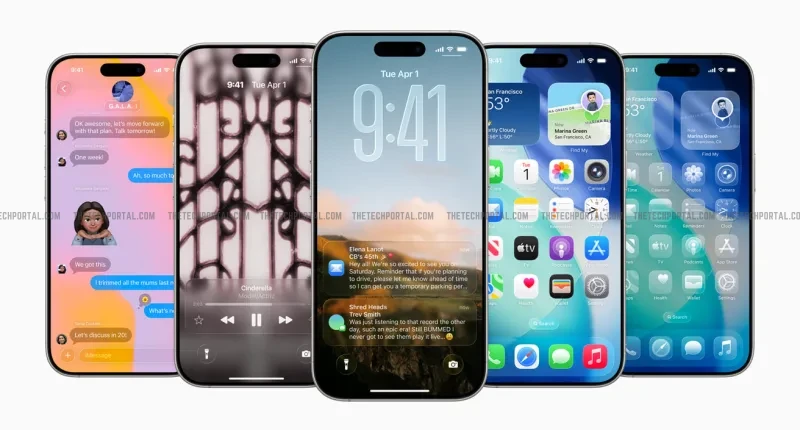Cupertino-headquartered tech giant Apple has now begun the rollout of iOS 26.1,bringing a series of visual customization options, accessibility enhancements, and refinements to Apple Intelligence and system-wide performance. The company also released updates to its family of operating systems — iPadOS 26.1, macOS Tahoe 26.1, watchOS 26.1, and tvOS 26.1.
The iOS 26.1 update is now available to download for the iPhone 11 series and newer, including the second-generation iPhone SE. users need to go to Settings, then to General, and then click on the Software Update option. iOS 26.1 brings the “Liquid Glass” toggle, allowing users to switch between clear and tinted interface effects. The feature builds on Apple’s design language introduced earlier this year, offering an option that increases opacity for improved readability and contrast — an adjustment that responds to user feedback over visibility concerns with the original translucent design.
The update’s aesthetic shift extends to macOS Tahoe 26.1 and iPadOS 26.1, creating a unified design environment across Apple’s major platforms. Users can access the new toggle in Display & Brightness, and then clicking on the Liquid Glass option to see the preview that shows the differences between the modes.
Beyond cosmetic updates, iOS 26.1 refines several everyday interactions. Alarms now require a “slide to stop” gesture, reducing the likelihood of accidental dismissals — a callback to the “Slide to Unlock” motion from early iPhones. Users can also disable the Lock Screen swipe-to-open camera gesture, addressing long-standing complaints about unintentional activations.
Other small but practical changes include the return of the “Display Borders” accessibility option, a redesign of Settings alignment for better clarity, and interface adjustments in Photos, Calendar, and Music. Apple also replaced Rapid Security Responses with a new toggle that lets users decide whether automatic security updates are applied, offering more transparency in the update process. Apple Intelligence, the company’s suite of on-device AI tools introduced earlier this year, receives expanded language support in iOS 26.1. Users can now access features in Danish, Dutch, Norwegian, Portuguese (Portugal), Swedish, Turkish, Traditional Chinese, and Vietnamese.
Meanwhile, Live Translation with AirPods now supports Chinese, Japanese, Korean, and Italian, further extending Apple’s multilingual communication capabilities. This expansion continues Apple’s push to integrate intelligence features across devices while maintaining on-device processing for privacy compliance. FaceTime audio also benefits from improved sound quality, especially in low-bandwidth conditions, reflecting Apple’s ongoing efforts to enhance communication reliability without external app dependencies. For content creators and professionals, Local Capture — the feature that allows high-quality audio and video recording during video calls — has been significantly enhanced. Users can now adjust microphone gain levels and choose save destinations for recordings, addressing limitations cited in the initial release of iOS 26.
iPadOS 26.1 brings back the Slide Over multitasking feature, once a staple of iPad productivity. The revamped version allows a single resizable app to remain accessible from the edge of the screen, mirroring a picture-in-picture layout. Users with external displays can now maintain separate Slide Over windows per screen — a significant quality-of-life enhancement for multitaskers.
New window management options let users hide active windows or close all at once, narrowing the usability gap between iPadOS and macOS. On macOS Tahoe 26.1, Apple continues refining its design system, applying the Liquid Glass tinting option and enhancing safety features. The Image Playground feature now supports third-party generative models, an early signal that Apple may be preparing to open its creative tools beyond proprietary frameworks.
Apple’s Fitness app gains the ability to log workouts manually, allowing users to enter details such as activity type, duration, and effort — a feature long requested by athletes using non-Apple equipment. In Apple Music, users can now swipe on the MiniPlayer to move between tracks, while Apple Intelligence’s AutoMix blends songs seamlessly based on tempo and genre, now accessible via AirPlay. The Calendar app reverts event colors to their pre-iOS 26 appearance after user feedback, restoring contrast and readability.
The Tech Portal is published by Blue Box Media Private Limited. Our investors have no influence over our reporting. Read our full Ownership and Funding Disclosure →






